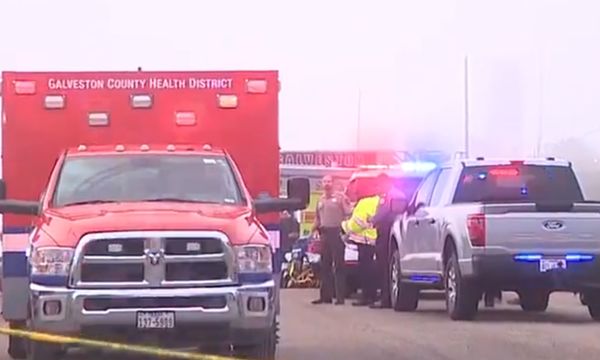Hong Kong's flagship carrier, Cathay Pacific, has faced turbulence over the holiday season, canceling over 80 flights since Christmas Eve. This has sparked concerns among passengers about potential disruptions and raised questions about underlying issues within the airline.

The Cathay Issue
The cancellations, affecting routes between Hong Kong and major Asian cities such as Singapore, Beijing, and Tokyo, have cast a shadow over Cathay's recovery plans. While the airline attributed the disruptions to "a marked increase in the number of flights operated over the holiday peak season" and "higher-than-anticipated pilot absence caused by seasonal illness," concerns remain about a deeper pilot shortage.
Paul Weatherilt, chairman of the Hong Kong Aircrew Officers Association, the Cathay pilot union, points to the airline's pandemic-era restructuring as a root cause. He argues that Cathay's decision to lay off nearly 1,000 pilots and resignations due to low morale and better opportunities elsewhere created a significant shortage.
While Cathay has been aggressively rehiring, Weatherilt emphasizes the lengthy training process in shaping a qualified pilot. "It takes as many as seven to 10 years to train a cadet pilot," he explains, highlighting the gap between recruitment and operational readiness.

He further criticizes the lack of focus on retaining experienced pilots: "There are still many former Cathay pilots out there who could be re-employed, which would greatly reduce the training required." Cathay's management, however, remains optimistic.
Claims to Nowhere
Cathay Pacific claims to be on track to restore passenger flight capacity to pre-pandemic levels by the end of 2024 and has plans to recruit over 800 cadet pilots in 2023 and 2024. The airline even aims to tap into the Chinese mainland for pilot recruitment for the first time.
This optimism is not universally shared. Brendan Sobie, the founder of Singapore-based aviation consulting firm Sobie Aviation, acknowledges the industry's long lead times for staffing but remains cautious: "Just because they had a shortage of available staff the last couple of weeks doesn't mean anything about the new staff that are expected to come on board this year."

Despite Cathay's guarantees, passengers express nervousness about future disruptions, particularly with flu season approaching in Hong Kong. Sarah, a finance worker due to return from London, admits to checking her emails nervously for cancellation notices. Ms. Tan Wanshan, who has booked flights for the Chinese New Year in February, expresses a decreased sense of security flying with Cathay.
Broader Pilot Shortage
The Cathay Pacific situation highlights a broader pilot shortage impacting airlines globally. The pandemic caused widespread layoffs and disruptions to training programs, creating a lag in qualified pilots as travel demand rebounds. Airlines worldwide are struggling to keep up, leading to flight cancellations and delays.
This shortage is compounded by factors like an aging pilot population nearing retirement and stricter regulatory requirements for pilot training. Additionally, the allure of higher salaries and better working conditions offered by some airlines further intensifies the talent competition. Managing this pilot shortage will require a multi-pronged approach.

Airlines must invest in robust training programs to attract and retain new pilots, but governments can play a role by streamlining regulations and incentivizing training initiatives. Collaboration between airlines and pilot unions can foster more attractive working conditions and career paths.
The situation at Cathay Pacific serves as a cautionary tale for airlines worldwide while navigating the post-pandemic world. Addressing the pilot shortage should be a top priority to ensure operations and passenger confidence return to pre-pandemic levels. Failure to do so could disrupt individual travel plans and hinder the aviation industry's overall recovery and growth.
Citation C550 Fireball: Greg Biffle and Five Others Killed in Failed Emergency Landing at KSVH » Memphis at Midnight: Inside FedEx's Global Superhub » Air France Suspends Paris-Manila Service for Summer 2026 »
Comments (0)
Add Your Comment
SHARE
TAGS
NEWS Hong Kong Cathay Pacific Pilot Shortage Flight Cancellation HKG China PilotsRECENTLY PUBLISHED
 Air France Flight Drops Nearly 4,000 Feet Per Minute, Diverts to Lyon
An Air France Airbus A320 has experienced technical difficulties shortly after departure, causing the aircraft to descend at nearly 4,000 feet per minute. No one on board was injured
NEWS
READ MORE »
Air France Flight Drops Nearly 4,000 Feet Per Minute, Diverts to Lyon
An Air France Airbus A320 has experienced technical difficulties shortly after departure, causing the aircraft to descend at nearly 4,000 feet per minute. No one on board was injured
NEWS
READ MORE »
 Mexican Medical Plane Crashes in Galveston Bay During Rescue Mission
Search and rescue operations are continuing into the evening in West Galveston Bay following the crash of a Mexican military medical flight. The Beech King Air 350, which was carrying eight people (two pilots and six passengers), went down around 3:15 p.m. on Monday as it approached Scholes International Airport.
NEWS
READ MORE »
Mexican Medical Plane Crashes in Galveston Bay During Rescue Mission
Search and rescue operations are continuing into the evening in West Galveston Bay following the crash of a Mexican military medical flight. The Beech King Air 350, which was carrying eight people (two pilots and six passengers), went down around 3:15 p.m. on Monday as it approached Scholes International Airport.
NEWS
READ MORE »
 Direct Minsk-New York Flights? Belavia Weighs Transatlantic Return for 2026
Following a series of diplomatic breakthroughs in late 2025, Belavia, Belarusian Airlines, is officially exploring the feasibility of a direct link between Minsk National Airport (MSQ) and New York's John F. Kennedy International Airport (JFK).
ROUTES
READ MORE »
Direct Minsk-New York Flights? Belavia Weighs Transatlantic Return for 2026
Following a series of diplomatic breakthroughs in late 2025, Belavia, Belarusian Airlines, is officially exploring the feasibility of a direct link between Minsk National Airport (MSQ) and New York's John F. Kennedy International Airport (JFK).
ROUTES
READ MORE »



